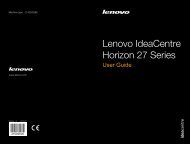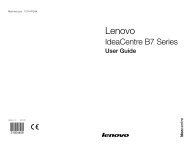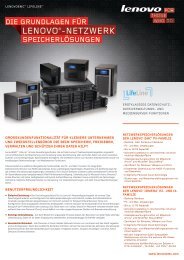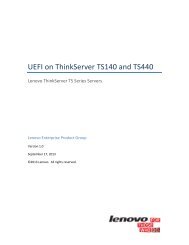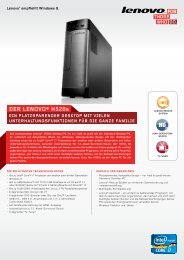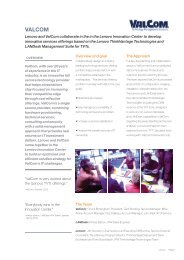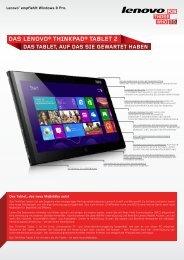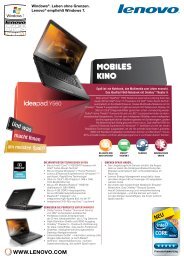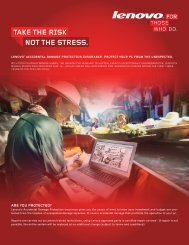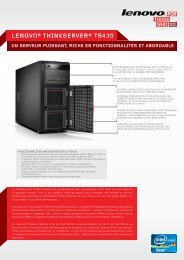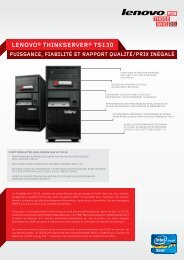Create successful ePaper yourself
Turn your PDF publications into a flip-book with our unique Google optimized e-Paper software.
Taking care of your computer<br />
Although your computer is designed to function reliably in normal work environments, you need to use<br />
common sense in handling it. By following these important tips, you will get the most use and enjoyment<br />
out of your computer.<br />
Be careful about where and how you work<br />
• Store packing materials safely out of the reach of children to prevent the risk of suffocation from plastic<br />
bags.<br />
• Keep your computer away from magnets, activated cellular phones, electrical appliances, or speakers<br />
(within 13 cm or 5 inch).<br />
• Avoid subjecting your computer to extreme temperatures (below 5°C/41°F or above 35°C/95°F).<br />
• Some appliances, such as certain portable desktop fans or air purifiers, can produce negative ions. If a<br />
computer is close to such an appliance, and is exposed for an extended time to air containing negative<br />
ions, it may become electrostatically charged. Such a charge may be discharged through your hands<br />
when you touch the keyboard or other parts of the computer, or through connectors on I/O devices<br />
connected to it. Even though this kind of electrostatic discharge (ESD) is the opposite of a discharge from<br />
your body or clothing to the computer, it poses the same risk of a computer malfunction.<br />
Your computer is designed and manufactured to minimize any effects of electrostatic charge. An electrostatic<br />
charge above a certain limit, however, can increase the risk of ESD. Therefore, when using the computer<br />
close to an appliance that can produce negative ions, give special attention to the following:<br />
• Avoid directly exposing your computer to the air from an appliance that can produce negative ions.<br />
• Keep your computer and peripherals as far as possible from such an appliance.<br />
• Wherever possible, ground your computer to facilitate safe electrostatic discharge.<br />
Note: Not all such appliances cause a significant electrostatic charge.<br />
Be gentle with your computer<br />
• Avoid placing any objects (including paper) between the display and the keyboard or the palm rest.<br />
• Your computer display is designed to be opened and used at an angle slightly greater than 90 degrees.<br />
Do not open the display beyond 180 degrees, as this might damage the computer hinge.<br />
• Do not turn your computer over while the ac power adapter is plugged in. This could break the adapter<br />
plug.<br />
Carry your computer properly<br />
• Before moving your computer, be sure to remove any media, turn off attached devices, and disconnect<br />
cords and cables.<br />
• When picking up your open computer, hold it by the bottom. Do not pick up or hold your computer by<br />
the display.<br />
Handle storage media and drives properly<br />
• If your computer comes with an optical drive, do not touch the surface of a disc or the lens on the tray.<br />
• Wait until you hear the CD or DVD click into the center pivot of the drive before closing the tray.<br />
• On your computer, use only optical drives designed for use with the serial Ultrabay enhanced.<br />
Note: You can install a 9.5-mm-thick serial Ultrabay slim or a 12.7-mm-thick serial Ultrabay enhanced<br />
device in the serial Ultrabay enhanced.<br />
Chapter 9. Preventing problems 203



